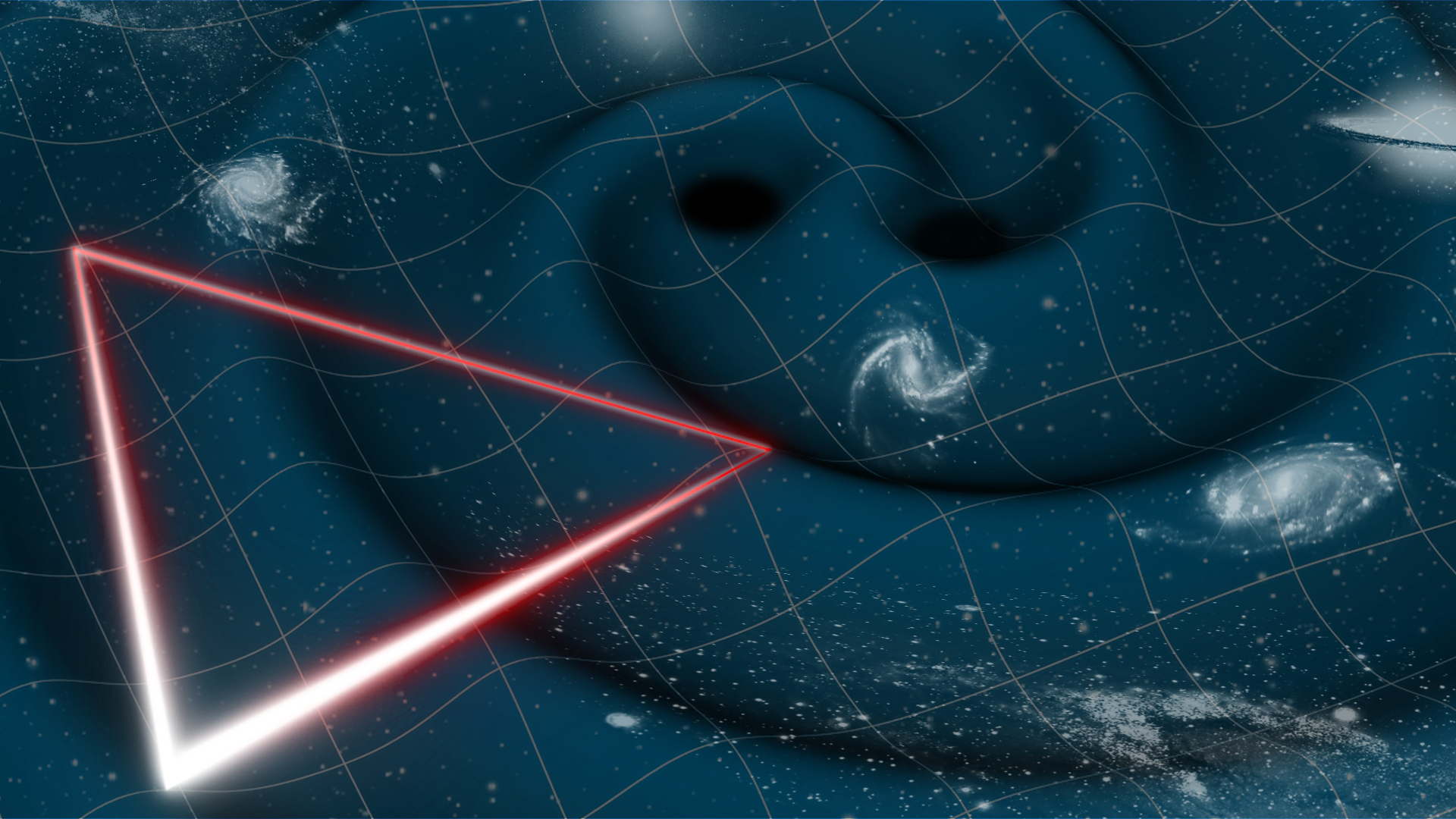- If we observe that light and gravitational waves have different speeds, then Einstein's theory of gravity is wrong, says Professor David Mota at the Institute of Theoretical Astrophysics.
Now everything is ready for the construction of a new observatory. LISA (Laser Interferometer Space Antenna), space mission recently approved by the European Space Agency (ESA), will capture gravitational waves in outer space while orbiting the Sun, 50 million kilometers from the Earth's surface.
- LISA will be able to test Einstein's general theory of relativity under new and extreme conditions, says Mota.
Gravitational waves are waves in space caused by large, heavy objects such as black holes and neutron stars colliding. Mota explains it as follows:
- According to Einstein, space does not have a fixed shape, like the water surface in a swimming pool. Throw a ball into the pool, and there will be waves on the surface. The water stretches beyond the edge of the pool. The surface gets longer.
- We also create such waves around us when we move. But they are so small that they are impossible to detect with measuring instruments. To achieve that, we have to use large massive objects like those found in the universe, such as black holes or neutron stars. They create enormous energy waves that we can measure.
The Universe as a laboratory
So, it is the very vast, empty space that is changing. Astrophysicists call it spacetime, where we not only have the three dimensions of length, width, and height, but also time. The four dimensions form a geometry, a relationship among them, which is influenced by things in space and the speed at which they move.
It is this geometry that researchers can now study with the help of gravitational waves.
To measure such a transient "stretch" in spacetime caused by gravitational waves, light is used. A light beam is split into two and sent out in two directions, and it is measured whether they return simultaneously. If they do, the distance is the same. If they do not return simultaneously, the distance between the light source and the mirrors has changed.

At the observatories here on Earth, such as LIGO in the USA and VIRGO in Italy, light is sent through tubes. These tubes are a few kilometers long. LISA, which will consist of three laser antennas placed in a triangular formation in space, will send light 2.5 million kilometers to capture the minuscule changes caused by gravitational waves.
- The gravitational wave actually consists of a series of waves that are continuously formed when two black holes spin around each other and eventually merge. When these waves pass by LISA's lasers, they will lead to an oscillation: the distance between them will increase and decrease. It all happens within seconds, says Mota.
The telescope sees the light and measures how far it has traveled. LISA looks towards the same point and "observes" how far the gravitational wave has traveled and whether it has the same speed as light.
- If the wave and the light have different speeds, or if the shape of the gravitational waves is not as expected, then Einstein's theory of gravity is wrong. It would have significant consequences for what we know about the universe, says Mota.
"Then we're talking about a revolution in science. It will be extremely important for our understanding of the universe", David Mota.
Testing alternative theories
For many years, researchers have been working on alternative theories of gravity that can explain phenomena such as dark energy. This is one of the things LISA aims to help uncover. But first, scientists need to know what data to expect, depending on which gravitational model they use. Will gravitational waves behave according to Einstein's theory of relativity, or will they conform to other laws?
This is where Mota and his colleagues at the University of Oslo come into the picture. Using numerical simulations, they will predict the shape of gravitational waves, depending on which model of gravity and dark energy they want to test.
- This is something we have to build up and learn as we go. We will simulate the development of black holes and neutron stars colliding, within the different theories. According to Einstein, black holes will have a specific spacetime geometry around them. For other theories, this geometry will be different. Then the gravitational wave will also be different.
If it turns out that the gravitational wave does not travel at the speed of light, our understanding of the age of the universe will also have to be reevaluated. Along with a whole lot of other things, such as how stars and galaxies are formed.
All this knowledge that researchers are going to extract from a tiny disturbance in the distance between three spacecraft 2.5 million kilometers apart.
You can read the full version of this article on Titan.uio.no (Norwegian language)
Read also
Thumbs up for the hunt for gravitational waves from space: Norway joins the quest
Contact
Institute of Theoretical Astrophysics, University of Oslo
E-mail: d.f.mota@astro.uio.no
